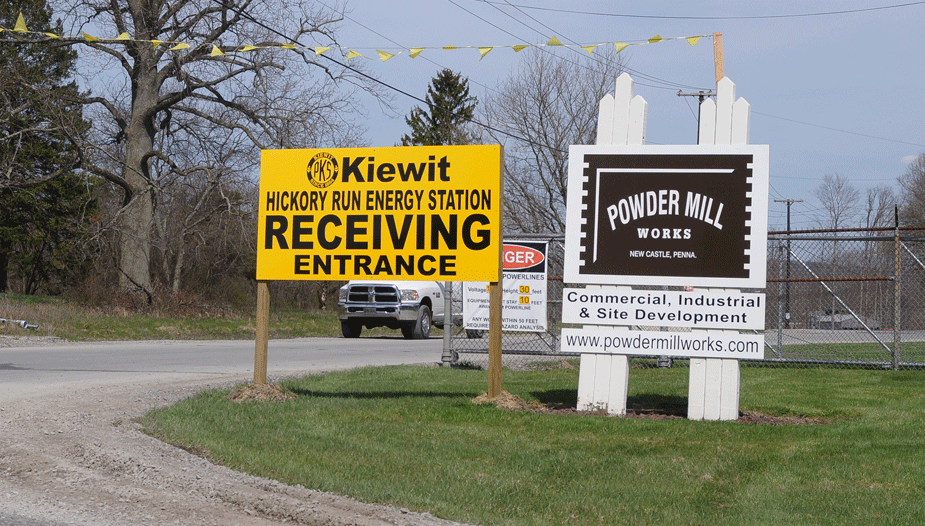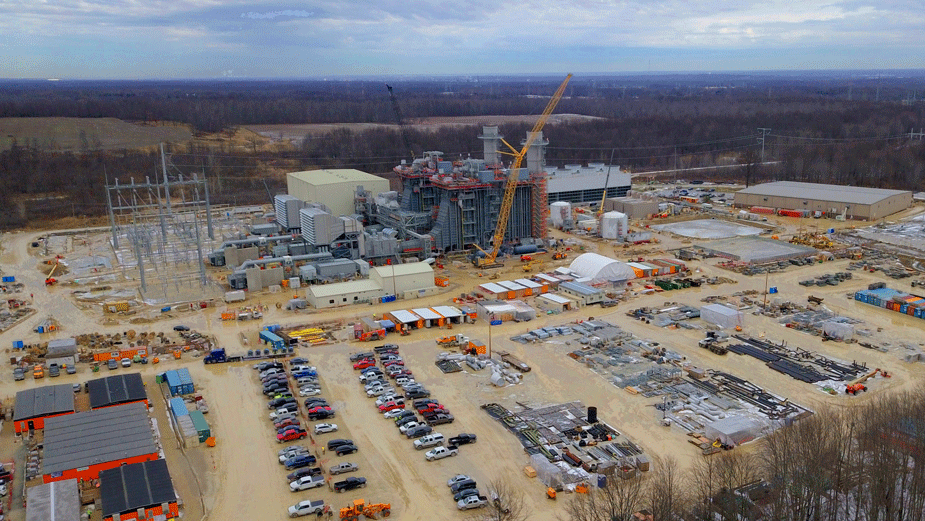Power Plant Projects Invest $4.6B in 4 Counties
YOUNGSTOWN, Ohio — The investment numbers are unlike any the region has witnessed in decades – more than $4.6 billion scattered across four counties in or around the Mahoning Valley where new, nimble and efficient electrical power plants are either in operation, under construction or under consideration.
It’s a signature of where growth in new energy will develop in America and what it will look like. This section of northeastern Ohio and western Pennsylvania – with its abundance of natural gas from the Utica and Marcellus shales – has emerged as the fulcrum for the industry’s future.
As older, less efficient power plants are retired or shut down, they’re being replaced with smaller, more cost-efficient combined-cycle plants that use natural gas and steam – not coal or nuclear power – to generate electricity for homes and businesses.
“What’s happening in the industry right now is equivalent to the automobile replacing the horse and buggy,” says Bill Siderewicz, president of Massachusetts-based Clean Energy Future LLC, which developed the Lordstown Energy Center, under construction, and is working to secure a second project for Lordstown, the Trumbull Energy Center.
“What’s happening is companies like FirstEnergy had these plants and failed to modernize them. And now companies like ourselves are finding a market to produce electricity more efficiently and at less cost,” Siderewicz says.
FirstEnergy Corp. announced March 28 that it would close all three of its nuclear power plants – the Davis-Besse Nuclear Power Plant and the Perry Nuclear Power Plant in Ohio, and the Beaver Valley Power Station in western Pennsylvania – over the next three years, as well as its two remaining coal-fired power plants.
“Though the plants have taken aggressive measures to cut costs, the market challenges facing these units are beyond their control,” said Don Moul, president of FES Generation Companies.
Then on March 31, two of FirstEnergy’s subsidiaries – FirstEnergy Solutions, which operates its coal-fired plants, and First Energy Nuclear Operating Co. – filed for reorganization under Chapter 11 bankruptcy. On April 23, the parent company announced an agreement with key creditors that could allow for a quick exit from Chapter 11.
Part of the agreement provides FirstEnergy Solutions and First Energy Operating Nuclear Co. with help from FirstEnergy on “key business matters” as it undergoes reorganization, the company said.
Siderewicz says that the bottom line is that these older plants are simply uncompetitive and will remain so.
“They’re sitting on these antiquated coal plants. These plants have 100% higher costs than a combined-cycle plant,” he says. “It’s simply uneconomical for coal. And there’s no way to salvage them.”
So it came as no surprise to Siderewicz that the FirstEnergy subsidiaries filed Chapter 11 and that it has targeted three nuclear plants for shutdown, eventually eliminating 4,000 megawatts of power generation – most of it in Ohio – the equivalent of providing electricity to four million homes.
That power generation has to be replaced by other sources, Siderewicz says, and companies such as Clean Energy are queued to help fill that gap.
“That’s why we came to Ohio,” he says. “There are tremendous opportunities for projects like the Trumbull Energy Center and other new plants.”
Clean Energy Future LLC was responsible for development of the Lordstown Energy Center at the Lordstown Industrial Park. That $890 million plant was sold to majority owner Macquarie, an international investment firm, and is under construction.
But efforts to build a second plant of similar scope – the Trumbull Energy Center – adjacent to the one under construction are compromised because of a protracted legal battle between Clean Energy Future and the owners of the Lordstown Energy Center.
Together, the plants would generate enough electricity to supply power to just less than two million homes.
Clean Energy Future was also the lead developer of a natural gas fired power plant – the Oregon Clean Energy Center – in Lucas County. A second plant is permitted and planned for the Lucas County site and is projected to be commissioned by 2020.
What attracts power generation projects to Ohio is the abundance of low-cost natural gas derived from the Utica and Marcellus shale plays.
Across Ohio, 11 new combined-cycle electrical generation plants worth an estimated $10.5 billion are either recently completed, under construction or in the planning or permit stages (CLICK HERE to see chart in May print edition).
Of that number, about $4.6 billion is devoted to new energy production plants in or around the Mahoning Valley. In addition to the two Lordstown projects – they’re valued at about $890 million each – new power plants are operating in Carroll County, proposed for Columbiana County in Ohio and under construction Lawrence County in western Pennsylvania, all within the footprint of the Utica shale.
One of the largest projects is Advanced Power’s South Field Energy plant near Wellsville in Columbiana County. The company, which earlier this year commenced operations at its Carroll County Energy plant, plans to invest $1.1 billion to build a plant capable of generating 1,170 megawatts of electricity, enough for 1.1 million homes.
“The project is expected to begin construction in the second half of 2018,” reports Zac Gordon, project manager for South Field Energy. Construction is expected to last about three years and the targeted commission date is the second quarter of 2021.
Like the Lordstown plants, South Field and Carroll County use lower-cost natural gas instead of coal as fuel. Moreover, these high-tech facilities use heat – a byproduct of generation – to power a steam turbine that produces additional electricity. The process is much cleaner and causes less harm to the atmosphere and environment.
“The investment in South Field Energy will push Advanced Power’s investment in the region to over $2 billion in the span of approximately five years,” Gordon says. “The investment stimulates the local economy through purchases, creation of jobs and local tax revenue.”
These projects combined have the potential to create thousands of construction jobs, says Linda Nitch, director of economic development for the Lawrence County Regional Chamber in New Castle, Pennsylvania.
Last summer, Tyr Energy, the U.S. subsidiary of the Japanese energy giant Itochu, began construction on its $863 million Hickory Run Energy Station about five miles west of New Castle. The 1,000 megawatt plant is expected to be operating by April 2020. Power generation equipment will be two Siemens H-class gas turbine generators, two heat recovery steam generators and a Siemens steam turbine generator.
 Entrance to the Hickory Run Energy Station construction site.
Entrance to the Hickory Run Energy Station construction site.
“It’s a wonderful investment,” Nitch says. “From the standpoint of construction, there should be about 500 workers there at its peak.”
But once the plant is operating, the number of permanent employees is much lower than larger, conventional power-generation facilities such as the Beaver Valley Nuclear Plant. “The new plant probably won’t exceed 50 people employed,” Nitch says.
The Beaver Valley station, on the other hand, employs more than 1,000 workers, many of whom live in Lawrence County and commute to work there.
“Closing the nuclear plant will cost a lot of jobs,” Nitch says.
Pictured at top: Construction of the Lordstown Energy Center is on track for the power generation plant to open late this year.
Copyright 2024 The Business Journal, Youngstown, Ohio.



